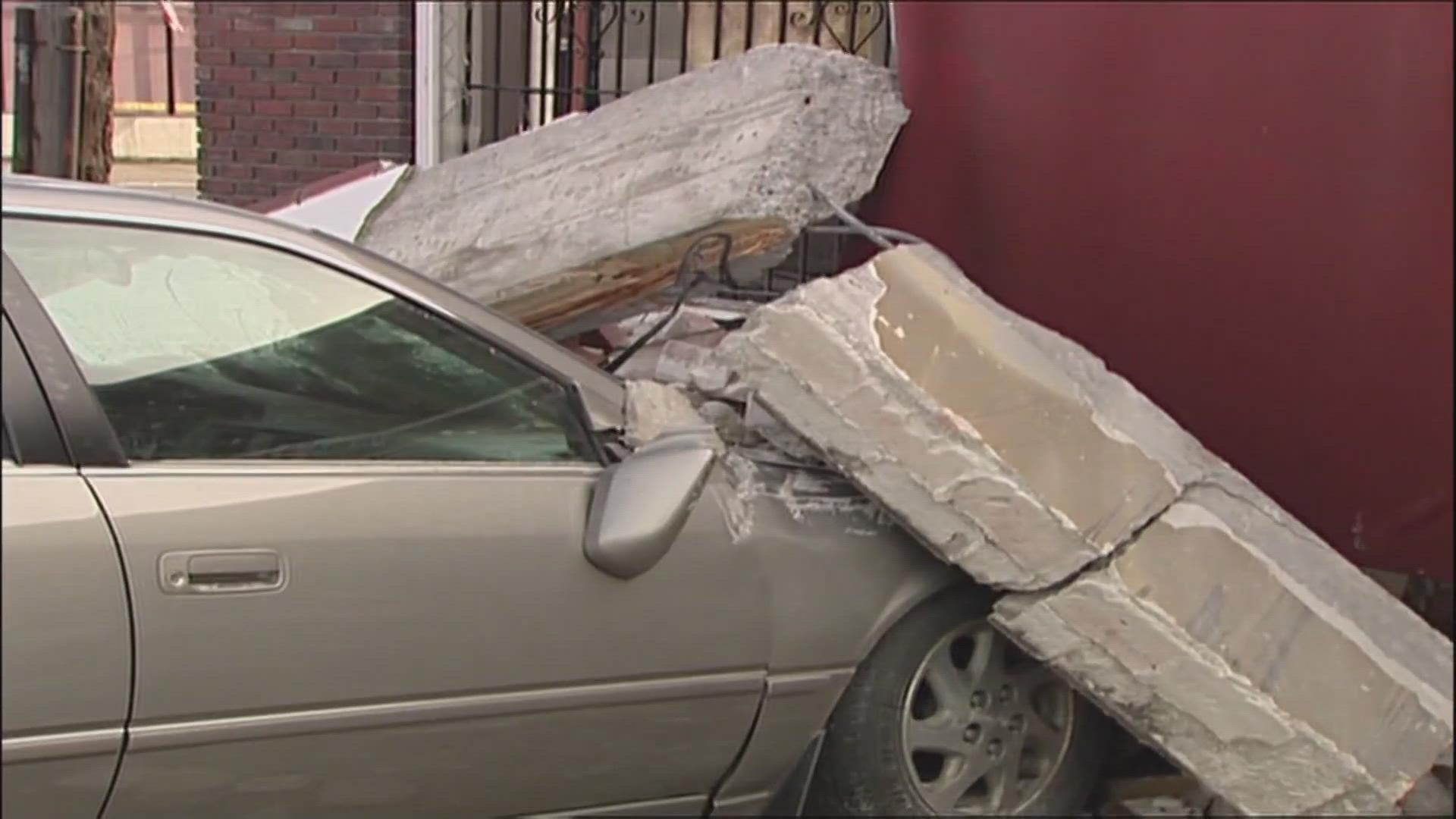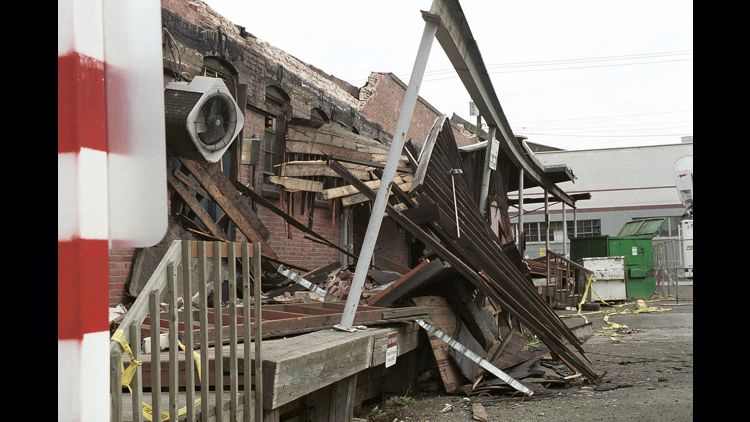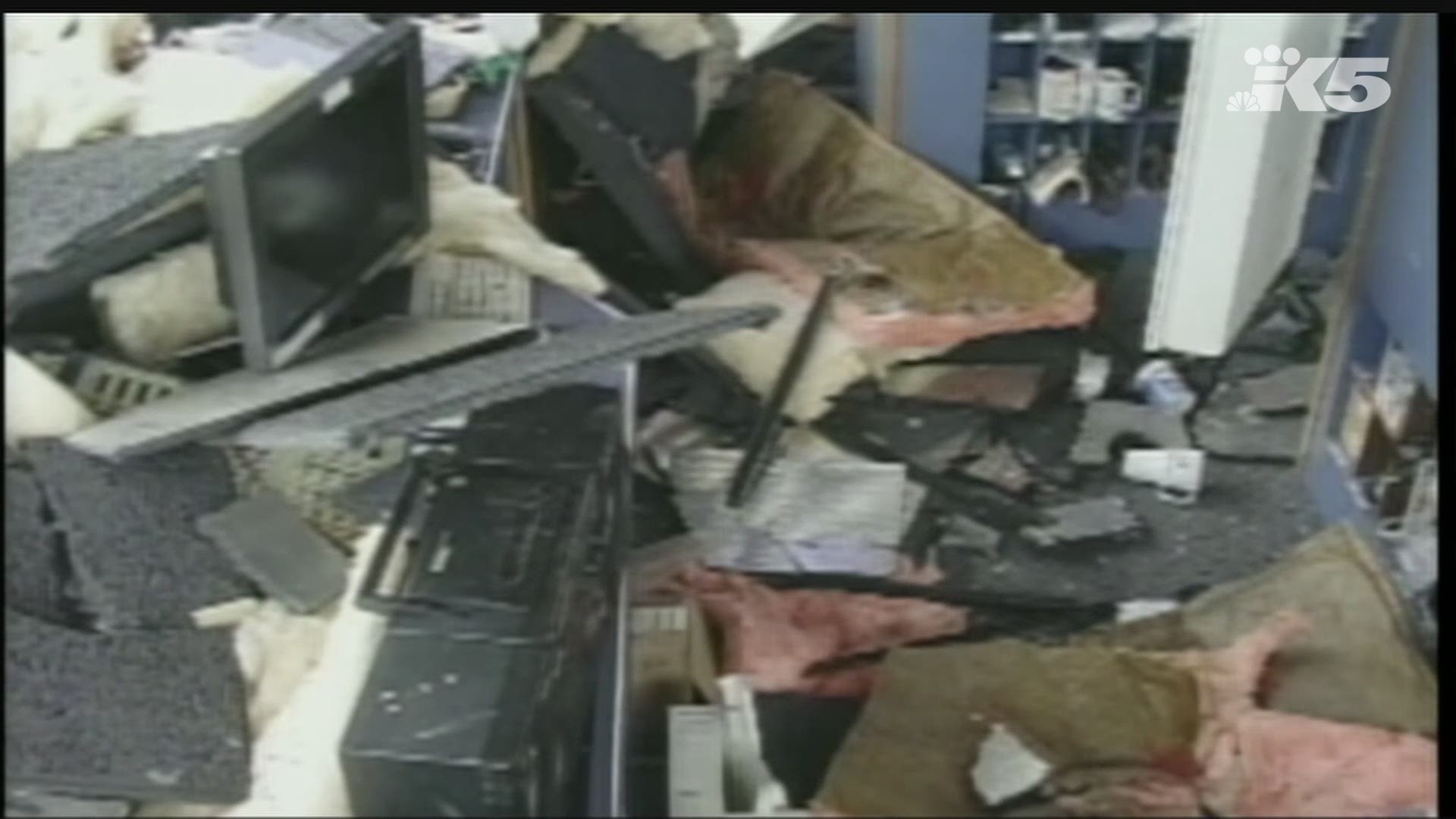OLYMPIA, Wash. — Tuesday, Feb. 28 marks the 22nd anniversary of the largest earthquake to shake the Pacific Northwest since the 1960s.
The magnitude 6.8 Nisqually earthquake in 2001 shook western Washington and beyond, seriously damaged or destroyed some buildings and roads and impacted bridges. The quake struck from a fault more than 35 miles under the Nisqually Delta, 11 miles north of Olympia, giving the quake its name.
The worst damage was in downtown Olympia, including the state capitol and to Pioneer Square in Seattle. Tacoma was largely spared.
The earthquake injured about 400 people. However, nobody died as a direct result of falling bricks or debris. A heart attack victim was the only fatality associated with the quake. Damage estimates were placed at several billion dollars.
The quake was felt as far away as southern British Columbia, central Oregon and northwestern Montana, according to the U.S. Geological Survey. The shaking lasted less than one minute.
2001 Nisqually earthquake damage
What has changed since the earthquake
Infrastructure
Many infrastructure projects were conducted when the earthquake highlighted some vulnerable bridges, tunnels and buildings in the city.
The State Route 99 tunnel was built and is the "safest place to be in an earthquake," according to the Washington State Department of Transportation. One of the reasons why it’s so earthquake-resistant is because the tunnel is underground and designed to move with the ground when there’s shaking.
The city has and is still retrofitting many older buildings and bridges that could be susceptible to damage during an earthquake.
Technology
Apps like MyShake and ShakeAlert were designed to alert residents that severe shaking was about to start. But those were advances seismologists could only dream of back in February 2001.
When sensors pick up seismic waves, that triggers an alert that shaking is expected. The warning system aims to give people time to prepare for the earthquake by dropping, covering and holding on. The system can also help businesses, schools and hospitals prepare.
Research
The Nisqually earthquake created more questions for scientists studying them. They didn’t even know that slowly-evolving quakes called "silent earthquakes" existed 20 years ago.
The "silent earthquakes" have a deep tremor and slow slip. Collectively, they move enough to slightly change the surface of the earth near them. The tiny epicenters pop as that plate slides. They will last for weeks until the event is over.
These silent quakes release the equivalent energy of a magnitude 6 earthquake, which is in the range of the Nisqually earthquake.
Preparing for what's next
The Nisqually earthquake wasn’t unexpected, and scientists know another one is coming.
The Puget Sound region has experienced two other major quakes in the last 70 years – a magnitude 6.5 in 1965 and a magnitude 7.1 in 1949. The 1949 quake killed eight people, and the 1965 earthquake was blamed for seven deaths.
Scientists said there was an 84% chance of another one like these in the 50 years following Nisqually.
According to a 2022 study by the Department of Natural Resources, tsunami waves from a magnitude 7.5 earthquake on the Seattle Fault would only take minutes to reach the greater Seattle area.
The study also found flooding from such a tsunami would exceed 20 feet along Seattle's shoreline. The DNR said the study found waves may travel up to 3 miles inland at the Port of Tacoma, although flooding would be lower than in previous studies.
If an earthquake occurs, it's safest to drop, cover and hold on, and then evacuate to higher ground to get as far inland as possible.
Emergency management officials urge people to prepare to be on their own for up to 14 days, which means building a disaster preparedness kit with food, water, first aid supplies, medications, and a hand-crank radio.




